Maybe it’s happened to you. You’re changing your bedding and you’ve just slipped off your fancy 600-thread-count pillowcase when you’re faced with a horrifying sight: your scary-looking, stained, yellowed pillow that no human should ever lay their head on.
What’s causing that pillow to turn yellow? Is it harmful or just unattractive? Should you throw it away or do you need to haul it to a hazardous waste dump? We’ll answer these burning questions before your next sleep.

What Turns Pillows Yellow
While it might not be a toxic 911 situation, the truth isn’t great. “Yellow pillows are the accumulation of dirt, oil, dead skin cells, drool, and perspiration,” Dr. Jenny Liu, M.D., a board-certified dermatologist and assistant professor of dermatology at the University of Minnesota Medical School, explained in a TikTok video.
And if that doesn’t make you more afraid to lay your head down tonight, Dr. Liu pointed out something else lurking in that yellow pillow. “Dust mites love to eat our dead skin cells and our pillows are infested with them,” she said. While you probably aren’t going to feel them (so don’t freak out!), these mites can lead to other problems. (More on this later.)
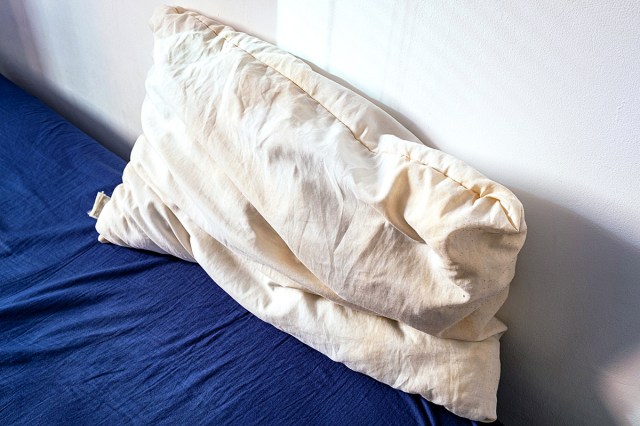
Is a Yellow Pillow Unhealthy?
Dr. Liu cautioned that the oils and perspiration trapped in your pillow can “clog pores and lead to breakouts,” not to mention wreak further havoc on your skin. “Damp pillows can exacerbate skin conditions like rosacea and eczema,” she said.
Those dust mites can pose a health hazard, too. “These microscopic pests commonly trigger allergies and asthma,” according to Dr. Amy Zack of the Cleveland Clinic. “They’re probably the most common type of insect-like bug (actually a type of arthropod) that you would find on an upholstered surface, such as a couch, pillow, or bed. If somebody has allergy symptoms, particularly during the night, then we might recommend they get pillowcases that prevent dust mites.”
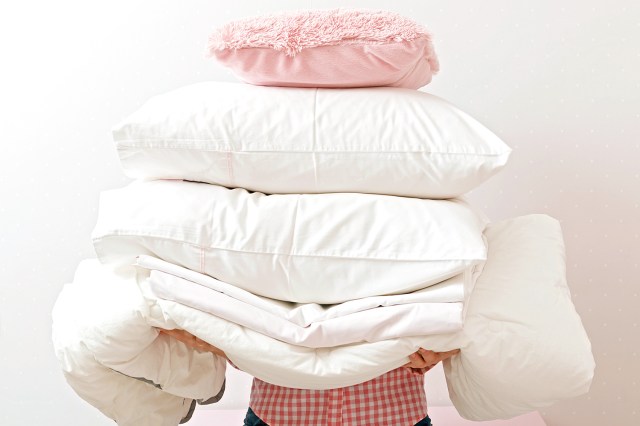
How Often You Should Wash Your Pillow
According to Consumer Reports, you should wash your pillow around twice a year, or four times a year if you sweat a lot, have pets that sleep with you, or have a habit of bringing food to bed. Experts also suggest some monthly maintenance; hang your pillow outside on a sunny, breezy day to air it out, or give it a spin in the dryer on a no-heat cycle.
Most importantly, read the washing instructions on your specific pillow to avoid damaging it, as methods for washing down or feather pillows, memory foam or latex pillows, or polyester pillows will vary, as will the methods for drying them.
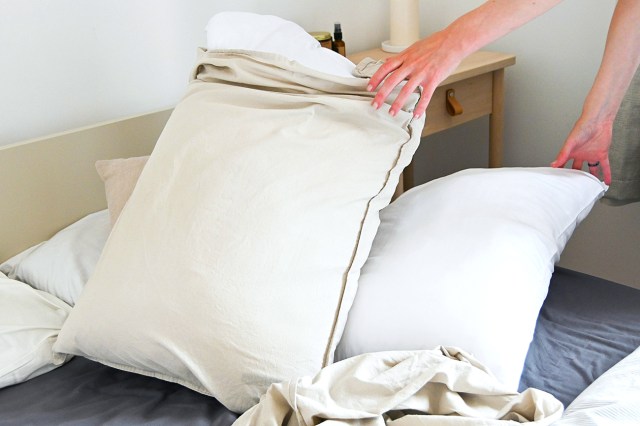
How To Keep Your Pillow From Turning Yellow
In addition to washing it, there are things you can do to make your pillow last longer and stave off the yellowing stage. Experts at the Sleep Foundation suggest keeping as much moisture away from your pillow as possible (so no more going to bed with wet hair) and also using a pillow protector that fits between your pillowcase and your pillow and keeps moisture and oils from seeping through. They also recommend splurging on a good pillowcase — higher-quality fabric will be more reliable in keeping moisture away from your pillow.
Additionally, if you’re an asthma or allergy sufferer, the Asthma and Allergy Foundation of America (AAFA) recommends certified asthma and allergy-friendly pillows and pillow covers (you’ll see the symbol) to ensure it meets standards for keeping asthma or allergy triggers under control.
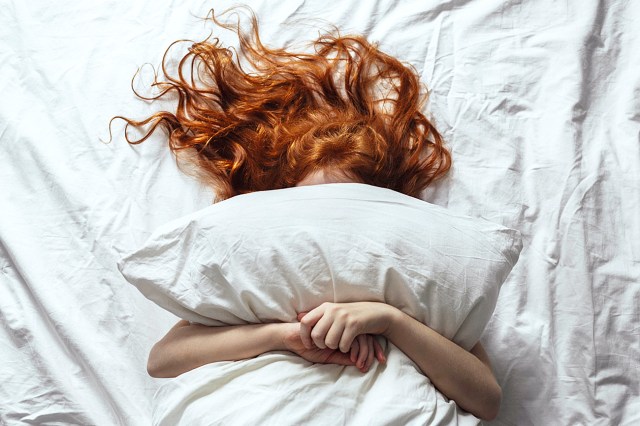
When To Get a New Pillow
Believe it or not, there is a segment of the population that is refusing to part with their yellow pillows. Last year, a user on X (formerly Twitter) sparked a popular online conversation by posting a photo of his beloved pillow and how he was refusing to dispose of it against his girlfriend’s wishes. “It’s not my fault the pillow is yellow and bestows upon me the most peaceful slumber,” he wrote. Folks everywhere chimed in with their own deep feelings about their pillows. “Best sleep ever using this sweat-soaked abomination,” one wrote, while another mused, “Part of being a man is using the same pillow since the age of 10 and never washing it.”
We hate to be the bearer of bad news (or good news for that man’s girlfriend), but if you’ve had the same pillow since childhood, it’s time to get a new one. In fact, the (AAFA) recommends that you replace your pillow every two years, sooner if it’s already yellow. If you suffer from asthma or allergies, they suggest you look for pillows that block allergens (such as dust mites), are made from breathable fabric, can be easily cleaned to wash out allergens, and are free of chemicals that can trigger asthma and allergy symptoms.
However, when disposing of pillows, environmentalists warn against throwing them in the trash as most of the materials are not biodegradable and they pose a burden on landfills. They also should not be placed in recycling bins. The American Textile Recycling Service suggests using their website to find a facility near you that will accept used blankets and pillows. Another suggestion is to donate pillows — once they’ve been washed — to animal shelters to be used as bedding.
This article is for general informational purposes only.
Affiliate Disclaimer Medical Disclaimer



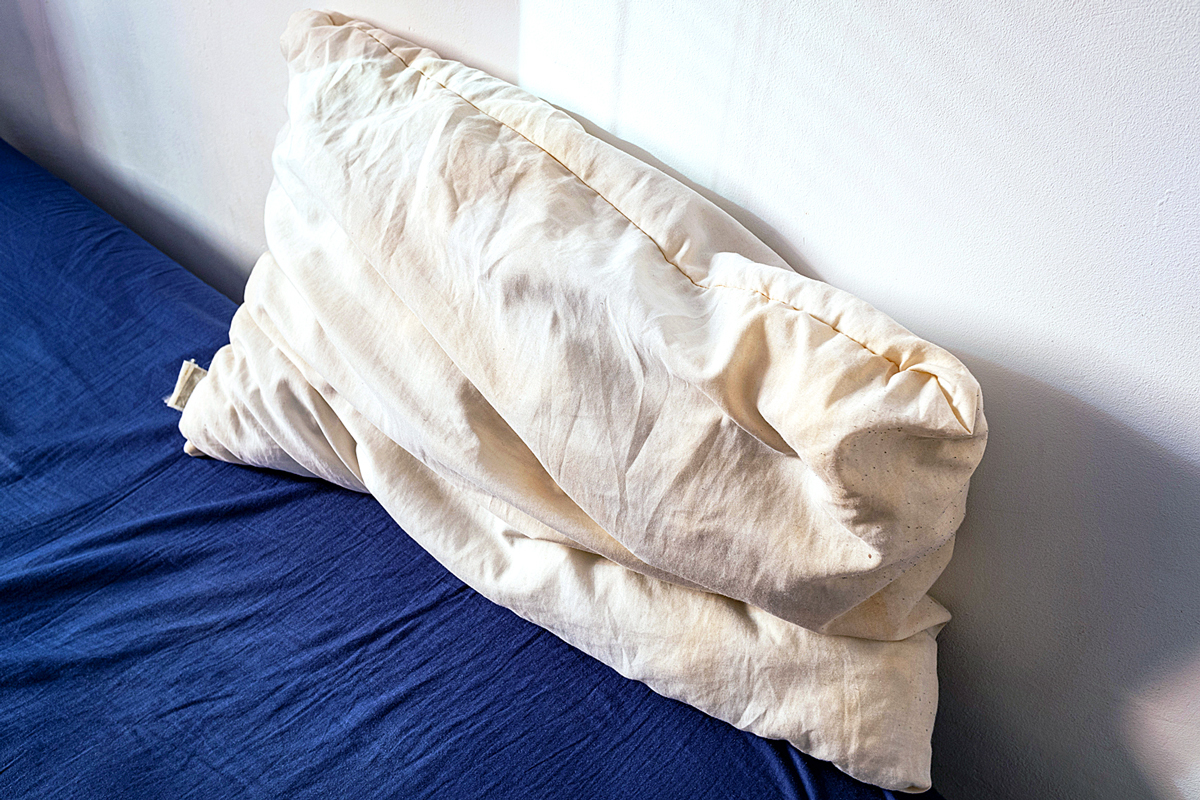



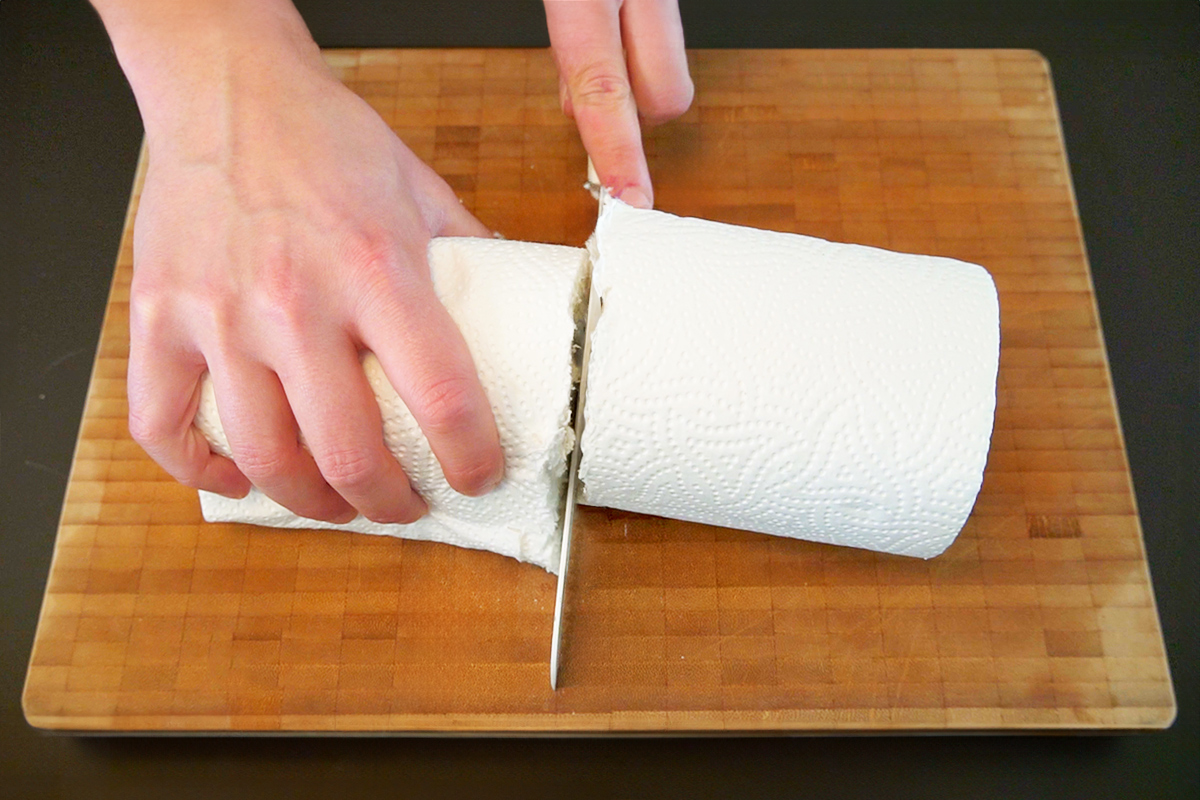
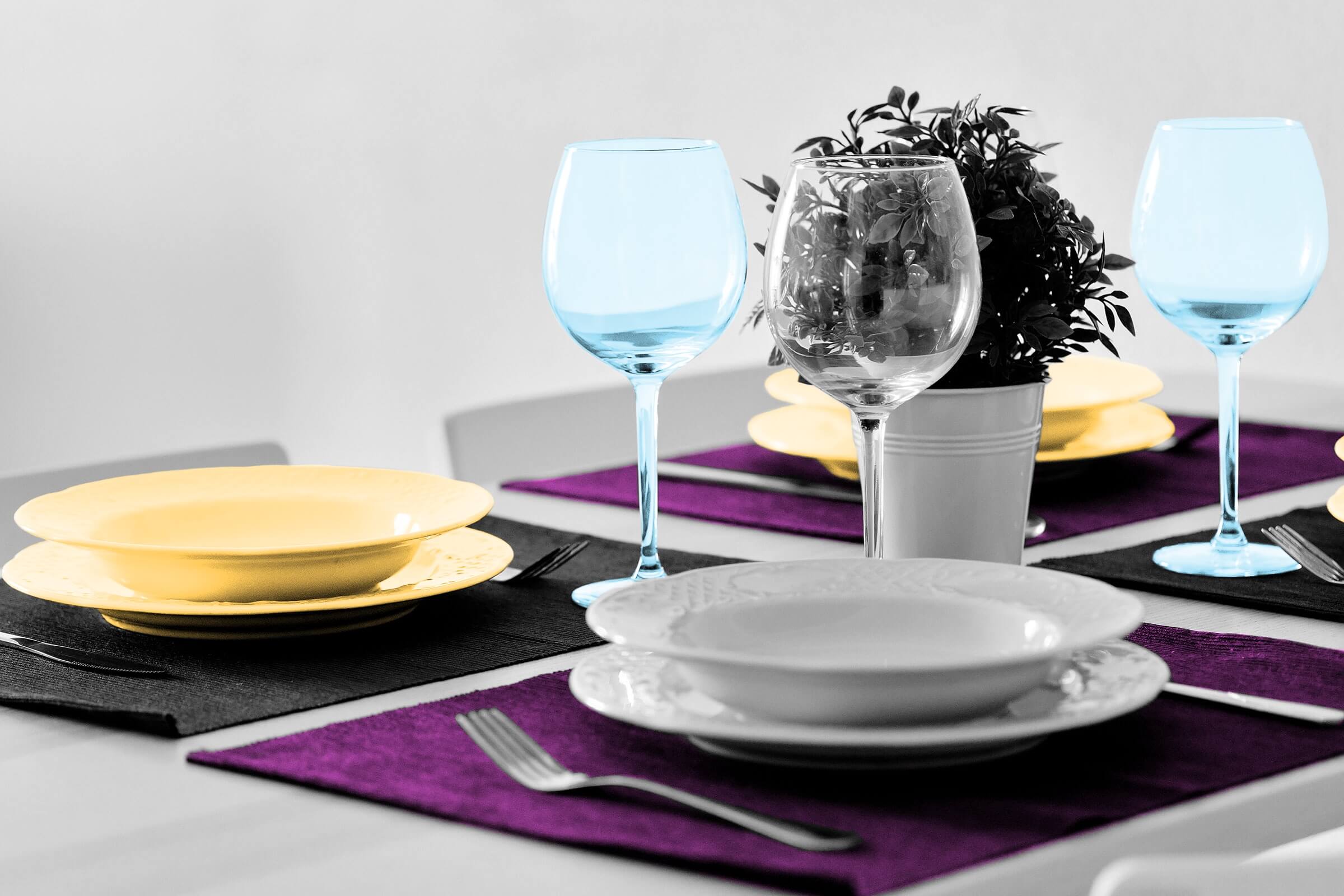
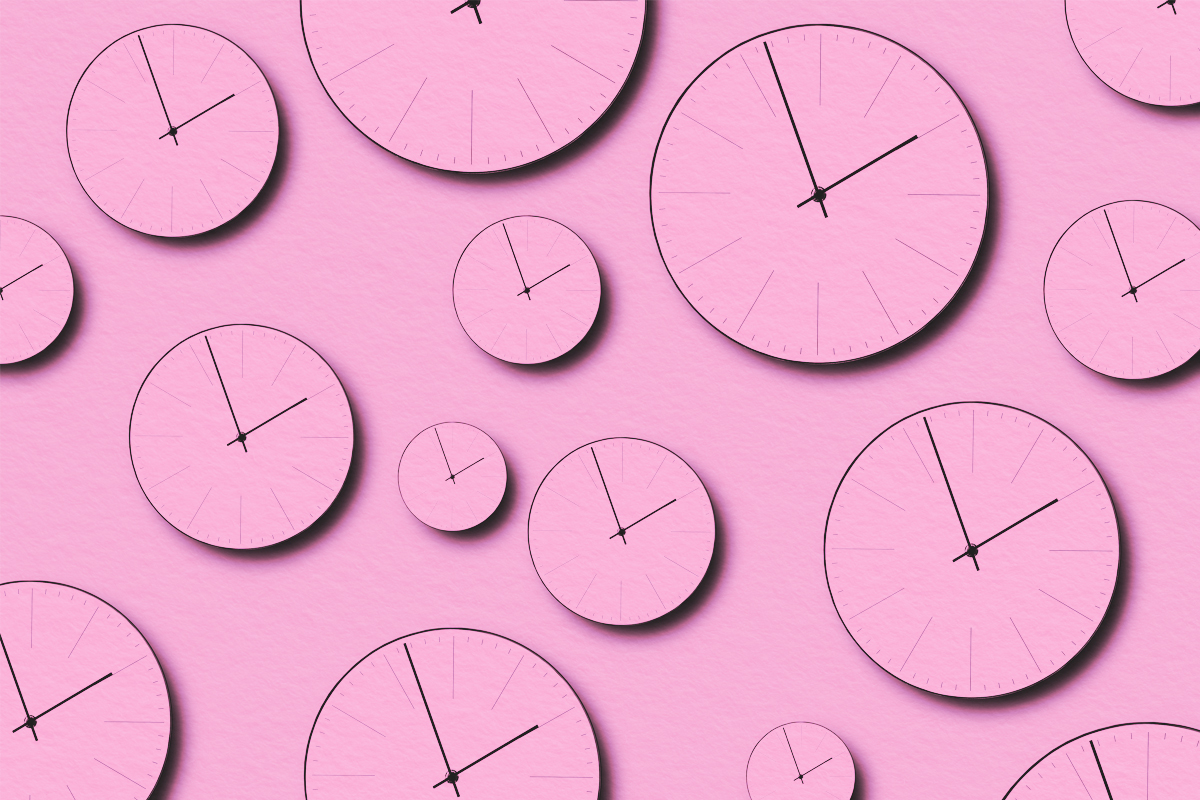



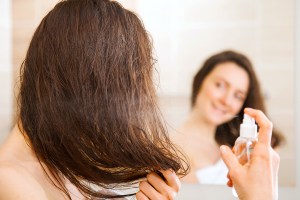
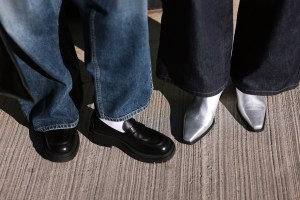

 Unique Beauty is free for all users.
Unique Beauty is free for all users.